Abstract
The effects of a muscle twitch on the tremor of the extensor indicis muscle and of the tibial anterior muscle have been recorded in 14 patients with essential tremor and in 10 patients with Parkinson's disease. The muscle twitch evoked by the electrical stimulation of the motor nerve inhibits the tremor and synchronises it. The mean duration of the inhibition is 92.1 +/- 6.8 ms for essential tremor and 183.0 +/- 16.8 ms for Parkinsonian tremor. This inhibitory phase lasts longer when the muscle twitch is induced during the second half of the Parkinsonian tremor cycle. The effects of voluntary contraction and of unloading suggest that inhibition and resetting of the tremor can be attributed to the autogenic mechanism induced by Ib fibres discharges. The presence of a rhythmic inhibition in the cycle of Parkinsonian tremor accounts for the longer duration of the inhibitory phase. In practice, these techniques aid the diagnosis of tremor in these two conditions, for example they assist the identification of low frequency essential tremor and of postural tremor in Parkinson's disease.
Full text
PDF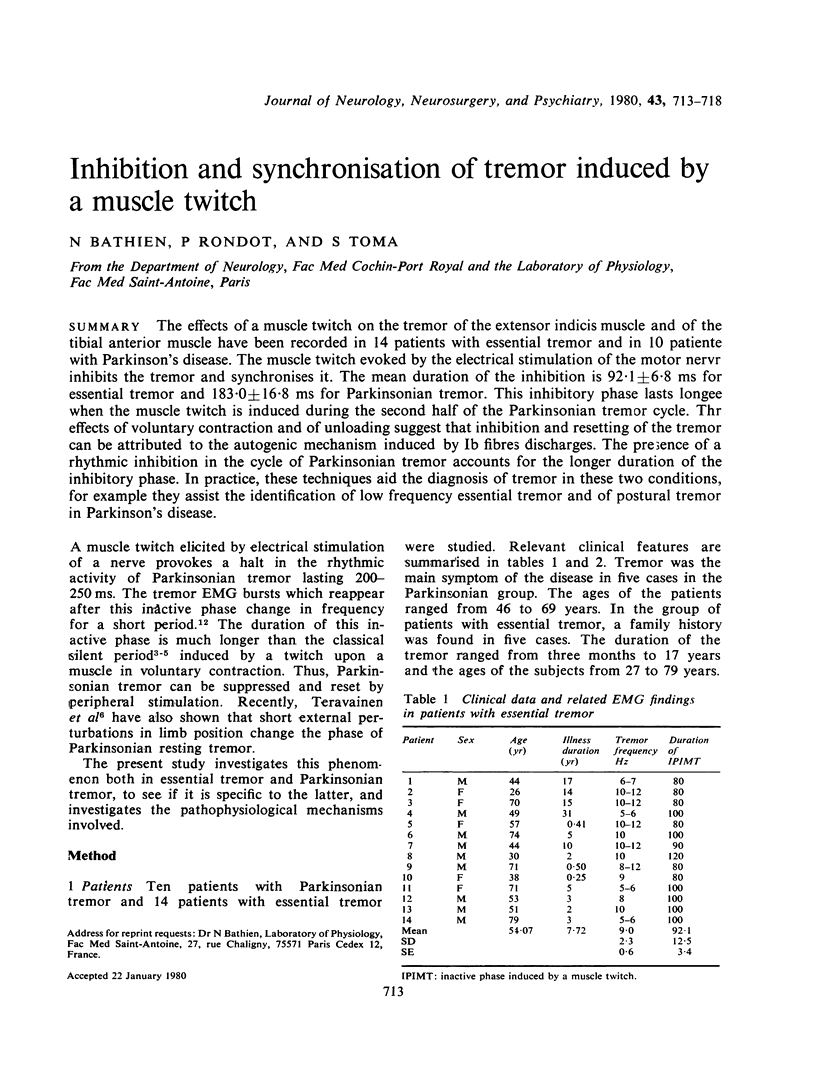
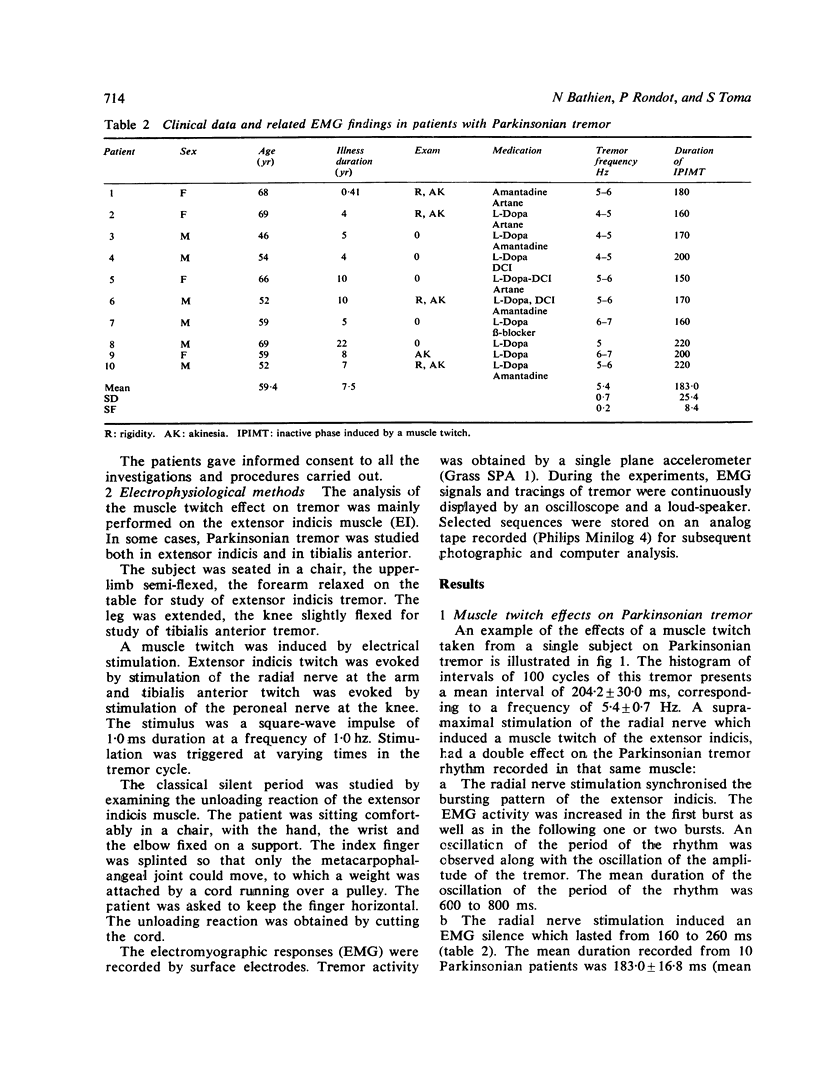
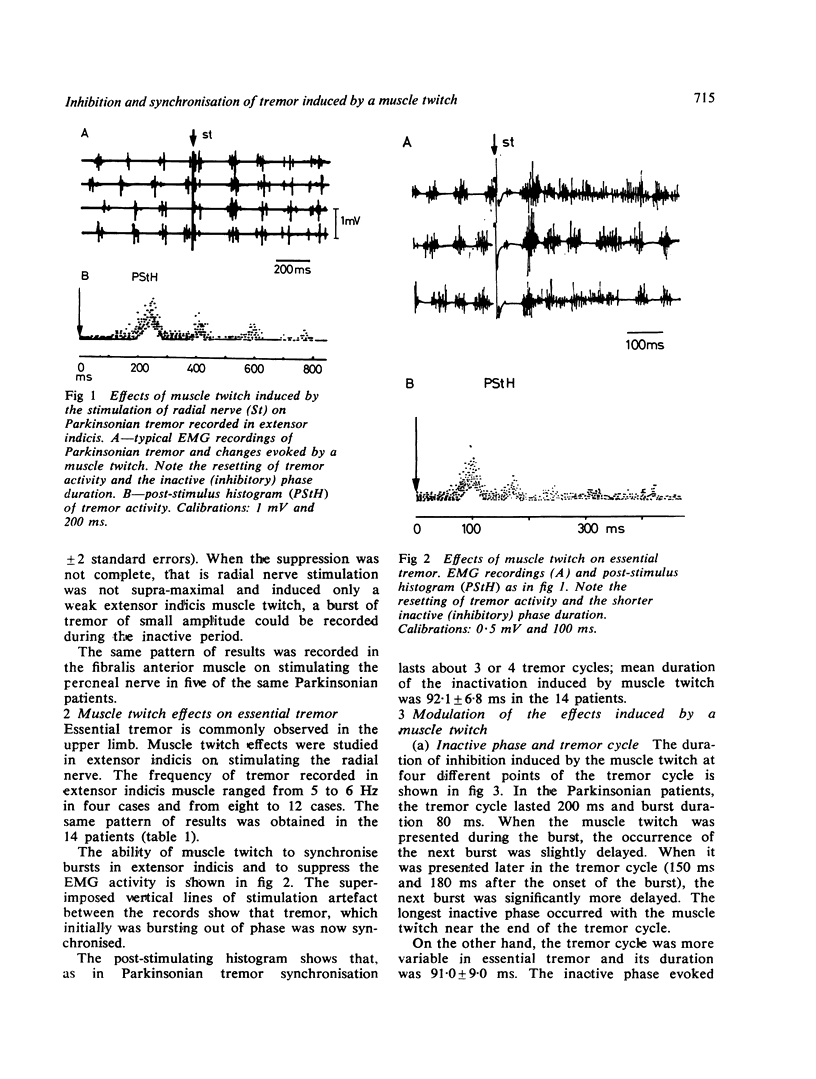
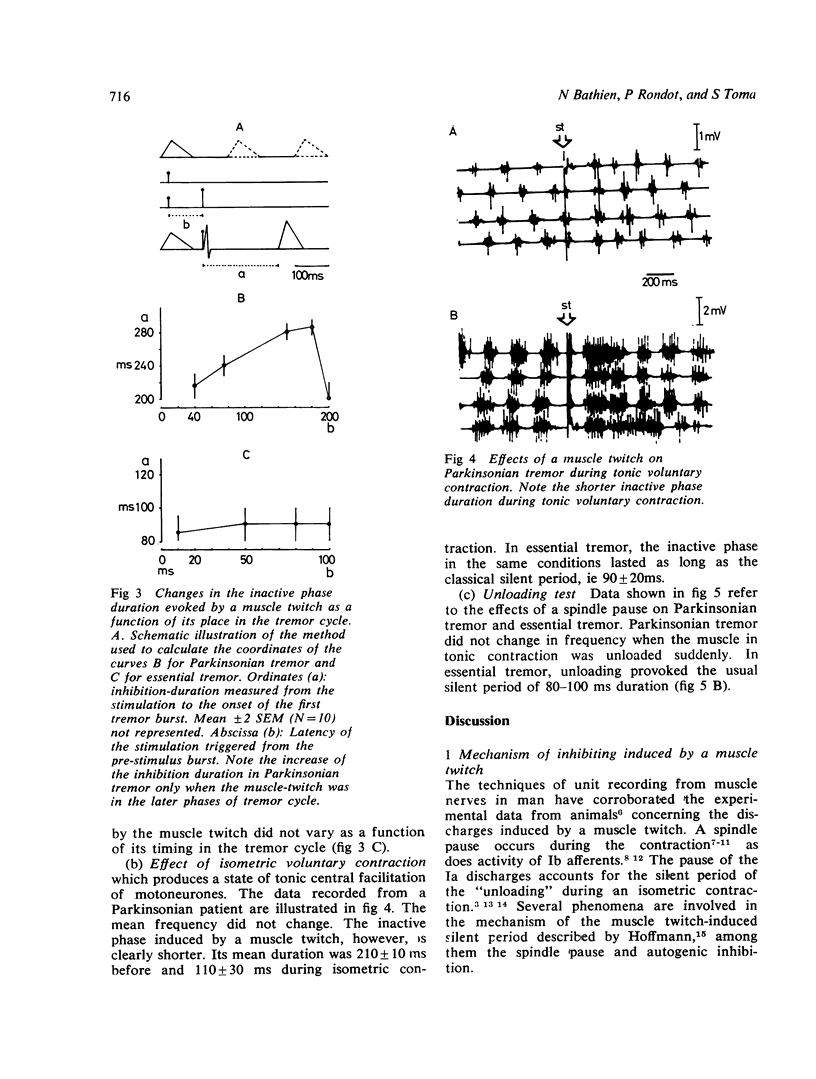
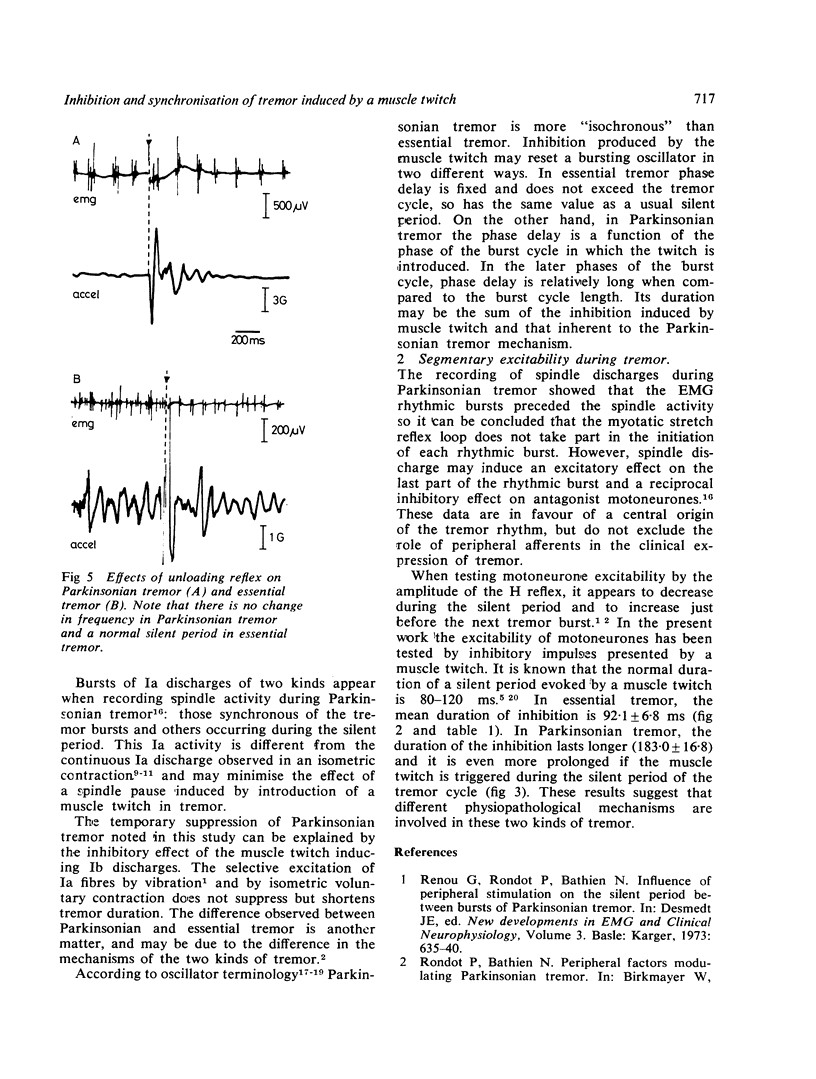
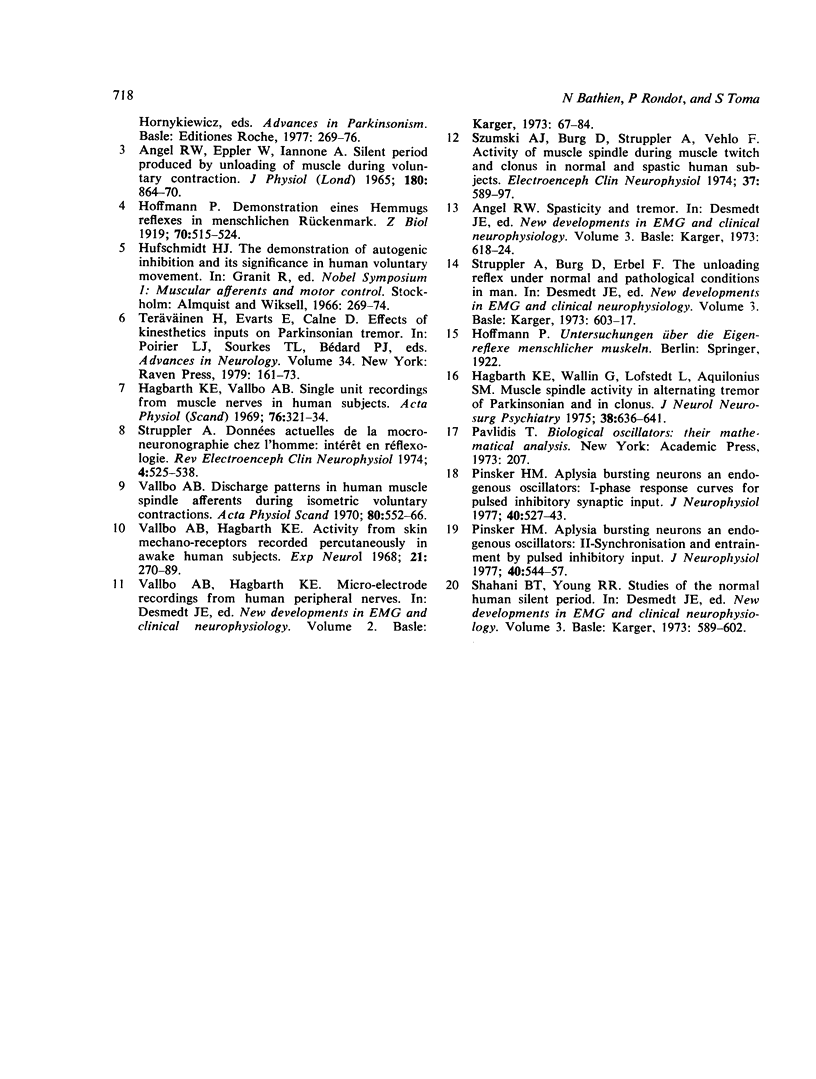
Selected References
These references are in PubMed. This may not be the complete list of references from this article.
- Angel R. W., Eppler W., Iannone A. Silent period produced by unloading of muscle during voluntary contraction. J Physiol. 1965 Oct;180(4):864–870. doi: 10.1113/jphysiol.1965.sp007736. [DOI] [PMC free article] [PubMed] [Google Scholar]
- Hagbarth K. E., Vallbo A. B. Single unit recordings from muscle nerves in human subjects. Acta Physiol Scand. 1969 Jul;76(3):321–334. doi: 10.1111/j.1748-1716.1969.tb04475.x. [DOI] [PubMed] [Google Scholar]
- Hagbarth K. E., Wallin G., Löfstedt L., Aquilonius S. M. Muscle spindle activity in alternating tremor of Parkinsonism and in clonus. J Neurol Neurosurg Psychiatry. 1975 Jul;38(7):636–641. doi: 10.1136/jnnp.38.7.636. [DOI] [PMC free article] [PubMed] [Google Scholar]
- Pinsker H. M. Aplysia bursting neurons as endogenous oscillators. I. Phase-response curves for pulsed inhibitory synaptic input. J Neurophysiol. 1977 May;40(3):527–543. doi: 10.1152/jn.1977.40.3.527. [DOI] [PubMed] [Google Scholar]
- Pinsker H. M. Aplysia bursting neurons as endogenous oscillators. II. Synchronization and entrainment by pulsed inhibitory synaptic input. J Neurophysiol. 1977 May;40(3):544–556. doi: 10.1152/jn.1977.40.3.544. [DOI] [PubMed] [Google Scholar]
- Struppler A. Données actuelles de microneurographie chez l'homme. Intérêt pour la réflexologie. Rev Electroencephalogr Neurophysiol Clin. 1974 Oct-Dec;4(4):525–538. doi: 10.1016/s0370-4475(74)80041-9. [DOI] [PubMed] [Google Scholar]
- Szumski A. J., Burg D., Struppler A., Velho F. Activity of muscle spindles during muscle twitch and clonus in normal and spastic human subjects. Electroencephalogr Clin Neurophysiol. 1974 Dec;37(6):589–597. doi: 10.1016/0013-4694(74)90072-8. [DOI] [PubMed] [Google Scholar]
- Vallbo A. B. Discharge patterns in human muscle spindle afferents during isometric voluntary contractions. Acta Physiol Scand. 1970 Dec;80(4):552–566. doi: 10.1111/j.1748-1716.1970.tb04823.x. [DOI] [PubMed] [Google Scholar]
- Vallbo A. B., Hagbarth K. E. Activity from skin mechanoreceptors recorded percutaneously in awake human subjects. Exp Neurol. 1968 Jul;21(3):270–289. doi: 10.1016/0014-4886(68)90041-1. [DOI] [PubMed] [Google Scholar]


